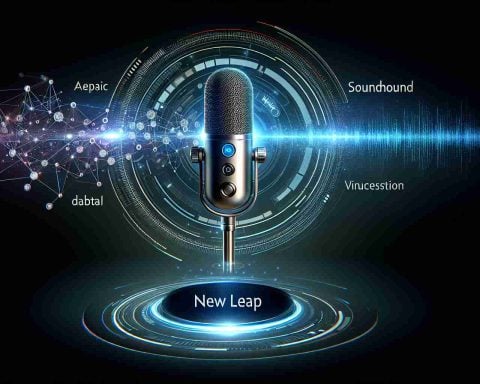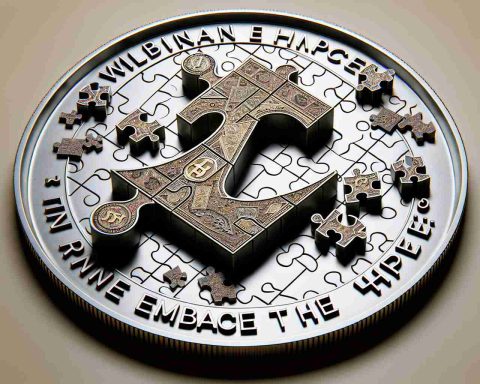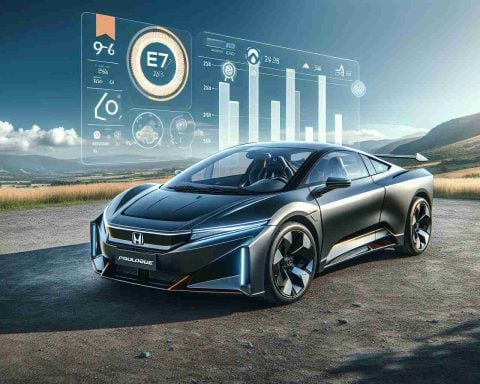- Nichicon launched the ESS-T5/T6 energy storage systems targeting 20,000 sales by March 2026 to meet growing renewable energy demands.
- The tri-hybrid system efficiently integrates solar energy into homes and EVs by utilizing direct current, eliminating energy conversion losses.
- This innovation supports Japan’s goal of achieving 40-50% renewable energy by 2040 and addresses rising electricity costs and disaster readiness.
- Increased storage capacity and converters foster energy self-sufficiency, promoting a move toward complete renewable energy reliance.
- Despite its premium pricing compared to competitors, Nichicon’s system offers significant potential for advancing sustainable energy in Japan.
Tokyo’s bustling streets witnessed a fresh breeze of innovation as Nichicon unveiled its latest ESS-T5/T6 series of energy storage systems, aiming to redefine how we power our homes and vehicles. With an ambitious target of selling 20,000 units by March 2026, Nichicon hopes to capitalize on the increasing demand for renewable energy solutions.
Picture a seamless blend of nature’s energy harnessed from the sun, channelled without loss into homes and electric vehicles (EVs). This tri-hybrid system provides a symphony of flexibility that harmonizes with the dynamic shifts in energy use. By using direct current for charging and discharging, the system bypasses traditional energy conversions, enhancing efficiency.
Japan’s energy roadmap envisions a future where renewable energy constitutes 40-50% of the mix by 2040. Nichicon’s new system aligns perfectly with this vision, predicting a surge in battery and EV integration due to rising electricity costs and the need for disaster preparedness.
The third-generation tri-hybrid system boasts increased storage capacity and powerful converters, paving the path for energy autonomy. Users can economically optimize solar energy, capitalizing on “energy self-sufficiency,” a concept Nichicon dubs “home production and consumption.” This strategy minimizes reliance on grid electricity during charging, edging closer to a full renewable power lifestyle.
However, this cutting-edge technology carries a premium. Although high, Nichicon argues the price reflects development and market factors. As competitors like Tesla offer more affordable alternatives, Nichicon’s premium price remains a barrier for widespread adoption. Yet, the ingenuity holds undeniable potential, suggesting that affordability might open doors to a greener future in Japan’s energy landscape.
Nichicon’s efforts could spark a remarkable evolution in sustainable energy, fostering cleaner, more independent energy consumption.
Unlocking the Power Revolution: Nichicon’s ESS-T5/T6 Energy Storage Systems Explained
How-To Steps & Life Hacks
Maximizing Your Nichicon ESS-T5/T6 System:
1. Evaluate Your Energy Needs: Start by assessing your daily energy consumption to determine the optimal storage capacity you need.
2. Optimal Solar Panel Placement: Install your solar panels in the direction of maximum sunlight exposure to maximize energy harnessed, usually south-facing in the northern hemisphere.
3. Efficient Usage: Schedule the charging of your electric vehicles and heavy appliances during peak solar hours to make the most out of the system’s direct current efficiency.
Life Hack: Use smart plugs and timers to manage the energy usage of appliances efficiently, aligning with peak solar power production times.
Real-World Use Cases
1. Residential Homes: Ideal for homeowners looking to minimize their reliance on the grid and cut down on electricity costs while using renewable energy sources.
2. Electric Vehicle Owners: Provides a sustainable and efficient energy source for charging EVs, especially beneficial for those living in areas with high electricity rates.
3. Disaster Preparedness: In disaster-prone regions, this system provides a reliable backup during power outages, ensuring energy resilience.
Market Forecasts & Industry Trends
Global demand for energy storage systems, particularly those integrated with renewable energy, is expected to grow significantly. According to a report by BloombergNEF, the global energy storage market is expected to multiply 15-fold by 2030. Nichicon’s strategy aligns well with this trend, particularly in Japan, where energy policy focuses on increasing renewable energy production and energy security.
Reviews & Comparisons
When compared to competitors like Tesla’s Powerwall, Nichicon’s ESS-T5/T6 series offers:
– Better Efficiency: Thanks to direct current utilization, minimizing energy losses.
– Higher Customization Options: Suitable for various energy needs and scenarios.
Limitation: Nichicon’s higher price point could be a deterrent compared to Tesla’s more affordable offerings.
Controversies & Limitations
Price Barrier: Nichicon’s systems are priced higher due to advanced technology and efficiency. While this may deter initial adoption, the long-term cost savings from energy self-sufficiency can offset this.
Features, Specs & Pricing
– Increased Storage Capacity: Benefits larger households and EV owners.
– Powerful Converters: Enhance energy transfer efficiency.
– Pricing: While premium, pricing details are customized based on specifications. Potential buyers are encouraged to contact Nichicon for exact pricing and potential financing options.
Security & Sustainability
Nichicon’s systems are designed with security in mind, including:
– Secure Data Integration: Multiple layers of encryption for data security.
– Sustainability: The system utilizes recyclable batteries and promotes reducing carbon footprint.
Insights & Predictions
Future of Energy Integration: Nichicon’s tri-hybrid system paves the way towards a more energy-independent lifestyle, resonating with Japan’s energy goals. As technology evolves, costs are expected to decrease, potentially making this technology accessible to a wider audience.
Tutorials & Compatibility
For compatibility:
– Smart Home Integration: These systems can integrate with smart home devices for ease of control and monitoring.
– Installation Tutorial: Nichicon provides comprehensive guides and professional installation support to ensure proper setup.
Pros & Cons Overview
Pros:
– High energy efficiency
– Promotes renewable energy
– Long-term cost savings
Cons:
– High upfront cost
– May be overkill for low-energy users
Actionable Recommendations
1. Engage with Local Incentives: Investigate government incentives or subsidies for renewable energy systems to reduce upfront costs.
2. Long-Term Planning: Consider energy needs for the next 5-10 years to future-proof the installation.
3. Community Sharing: Explore the potential for sharing energy with neighbors, turning it into a community-powered initiative.
For more information, explore Nichicon offerings through their official website: link name.
This guide can pave your way towards embracing the Nichicon ESS system, aligned with energy efficiency and sustainability goals.


















